
How to Use MQ-131 SENSOR OZONE GAS V2: Examples, Pinouts, and Specs
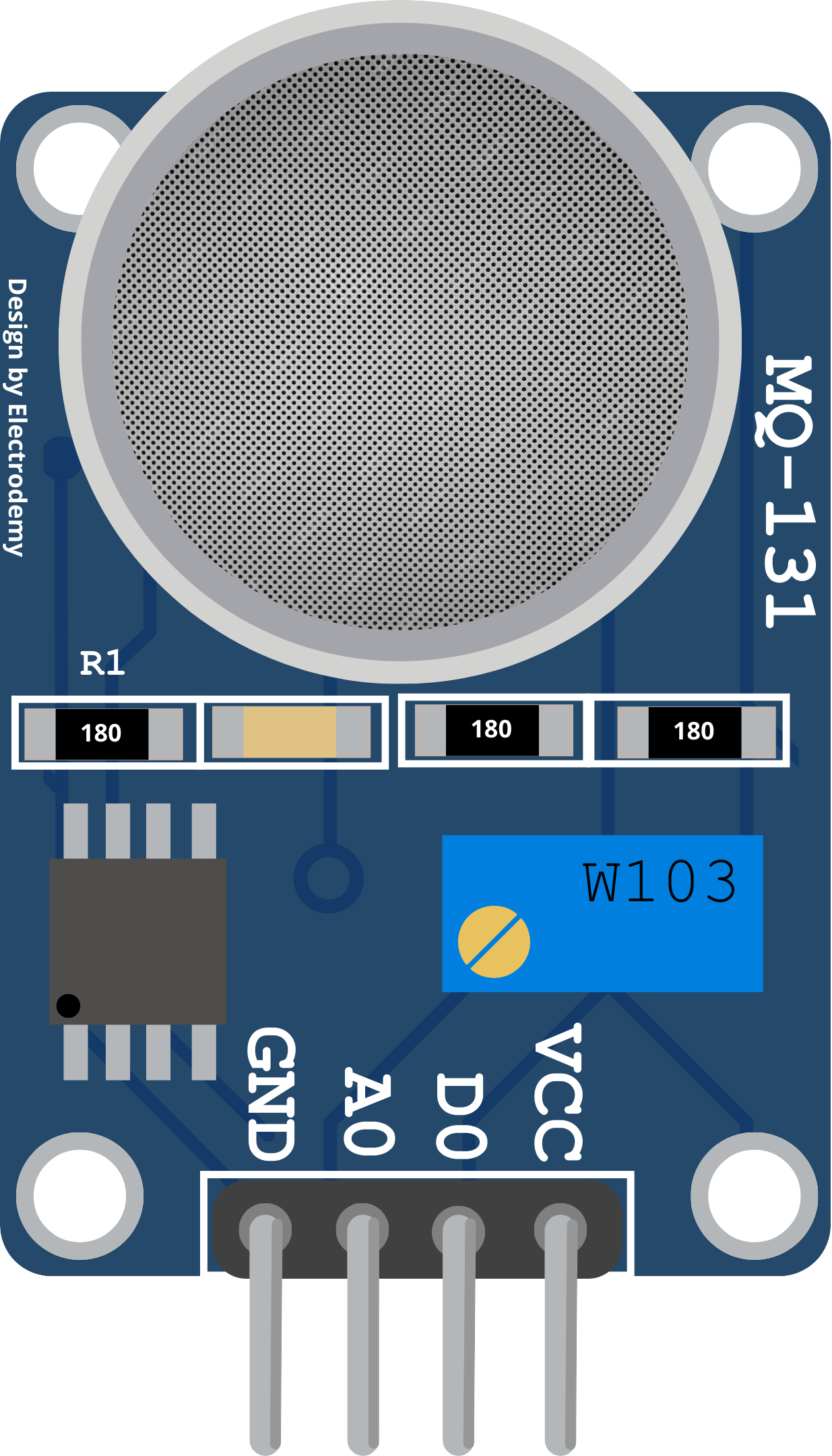
 Design with MQ-131 SENSOR OZONE GAS V2 in Cirkit Designer
Design with MQ-131 SENSOR OZONE GAS V2 in Cirkit DesignerIntroduction
The MQ-131 Sensor for Ozone Gas V2 is an electrochemical sensor module designed for the detection and measurement of ozone (O3) gas concentrations in the air. This sensor is widely used in environmental monitoring, industrial safety, and air purification systems to ensure the health and safety of individuals in various settings.
Explore Projects Built with MQ-131 SENSOR OZONE GAS V2
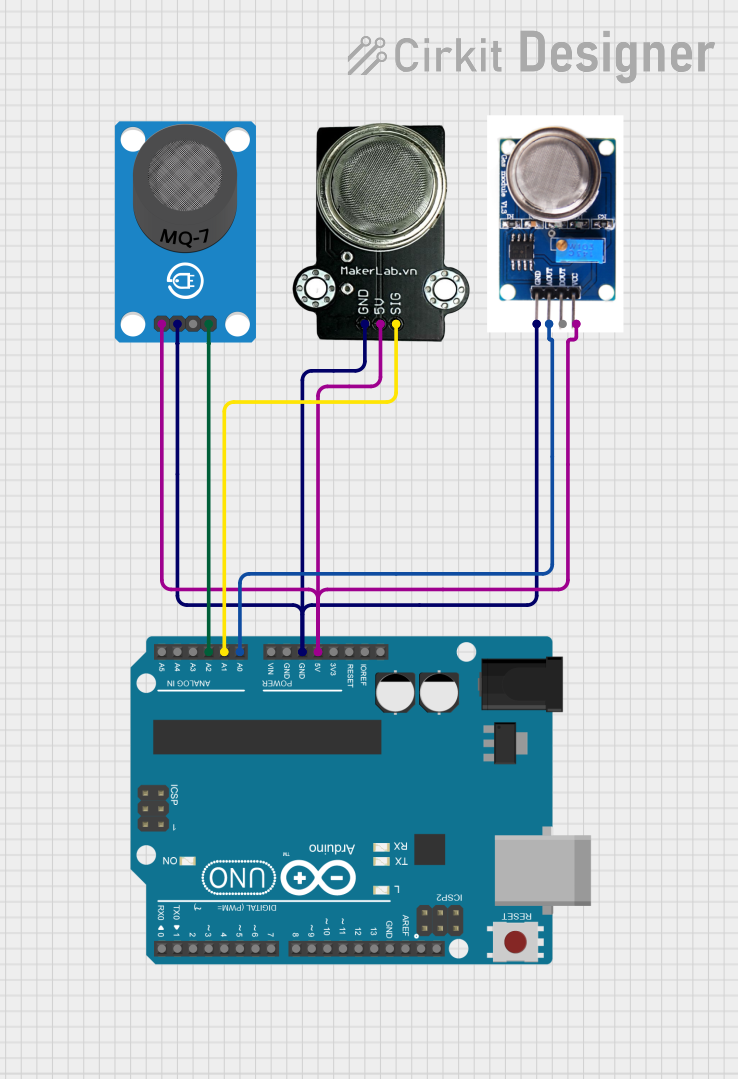
 Open Project in Cirkit Designer
Open Project in Cirkit Designer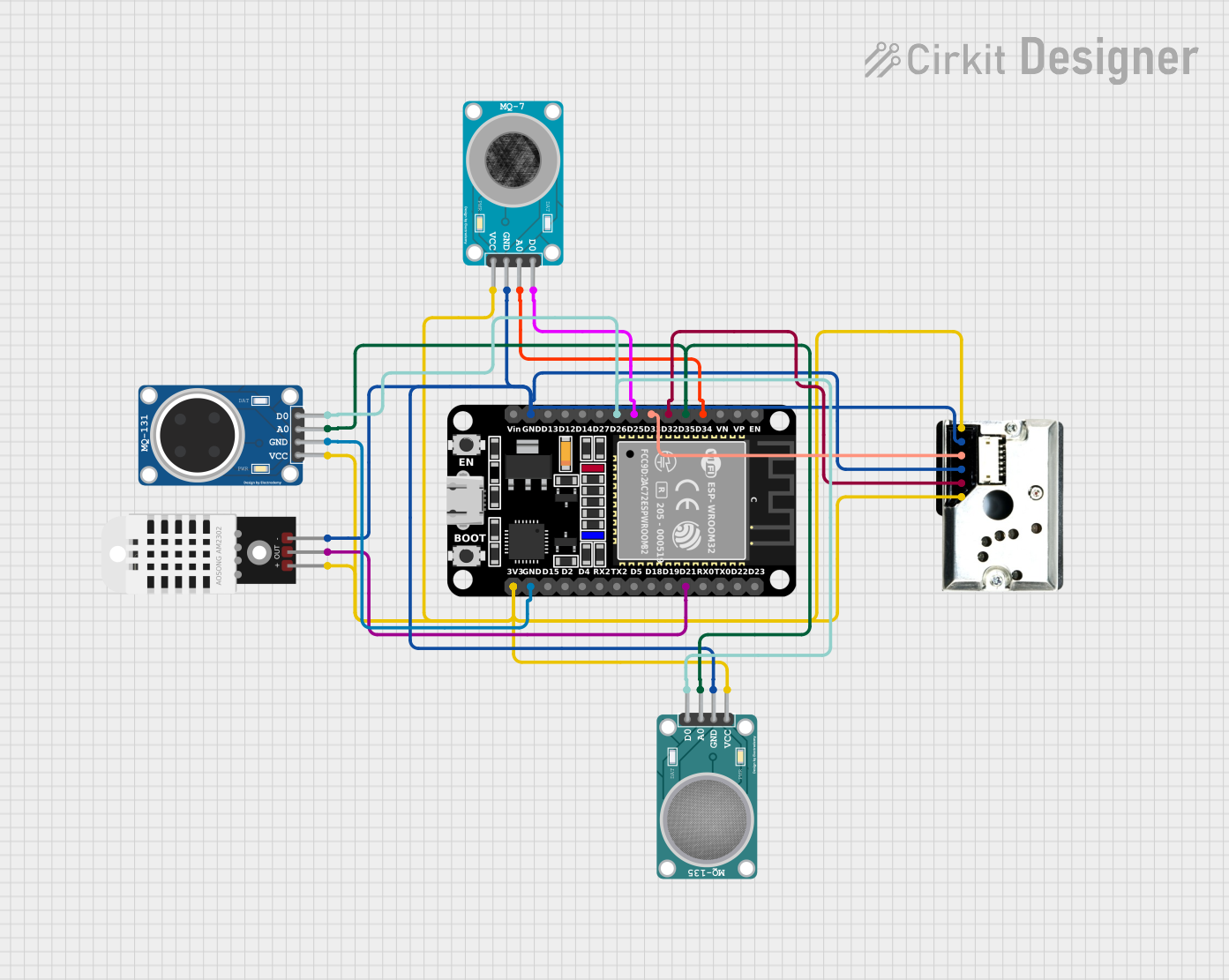
 Open Project in Cirkit Designer
Open Project in Cirkit Designer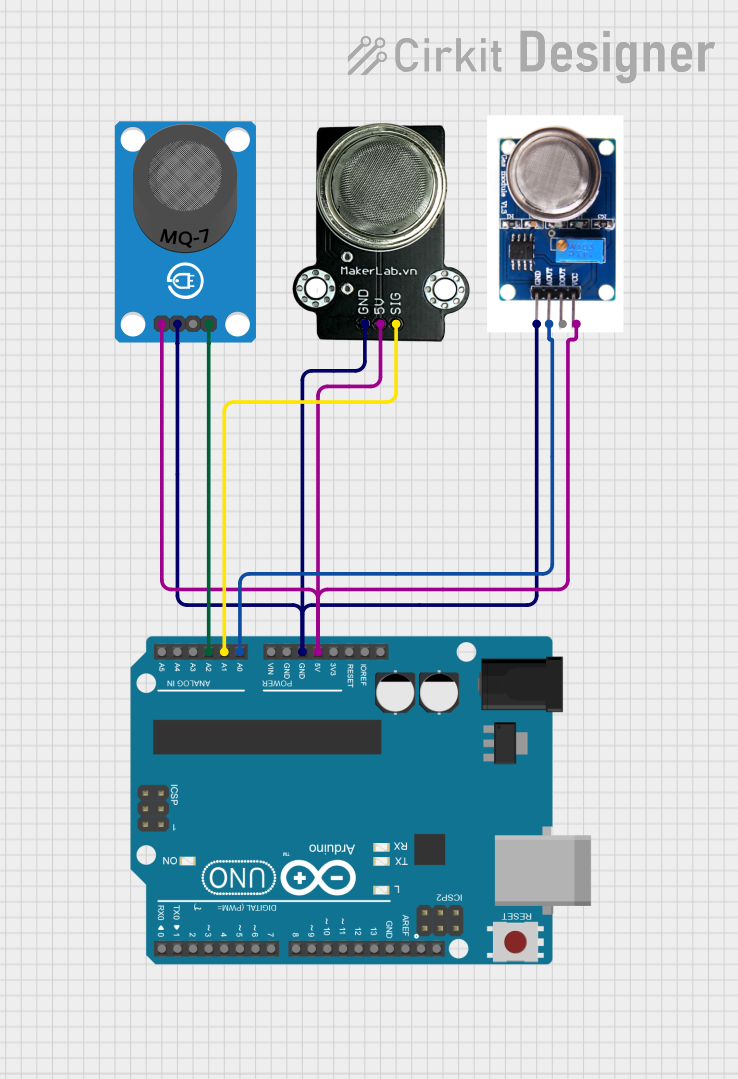
 Open Project in Cirkit Designer
Open Project in Cirkit Designer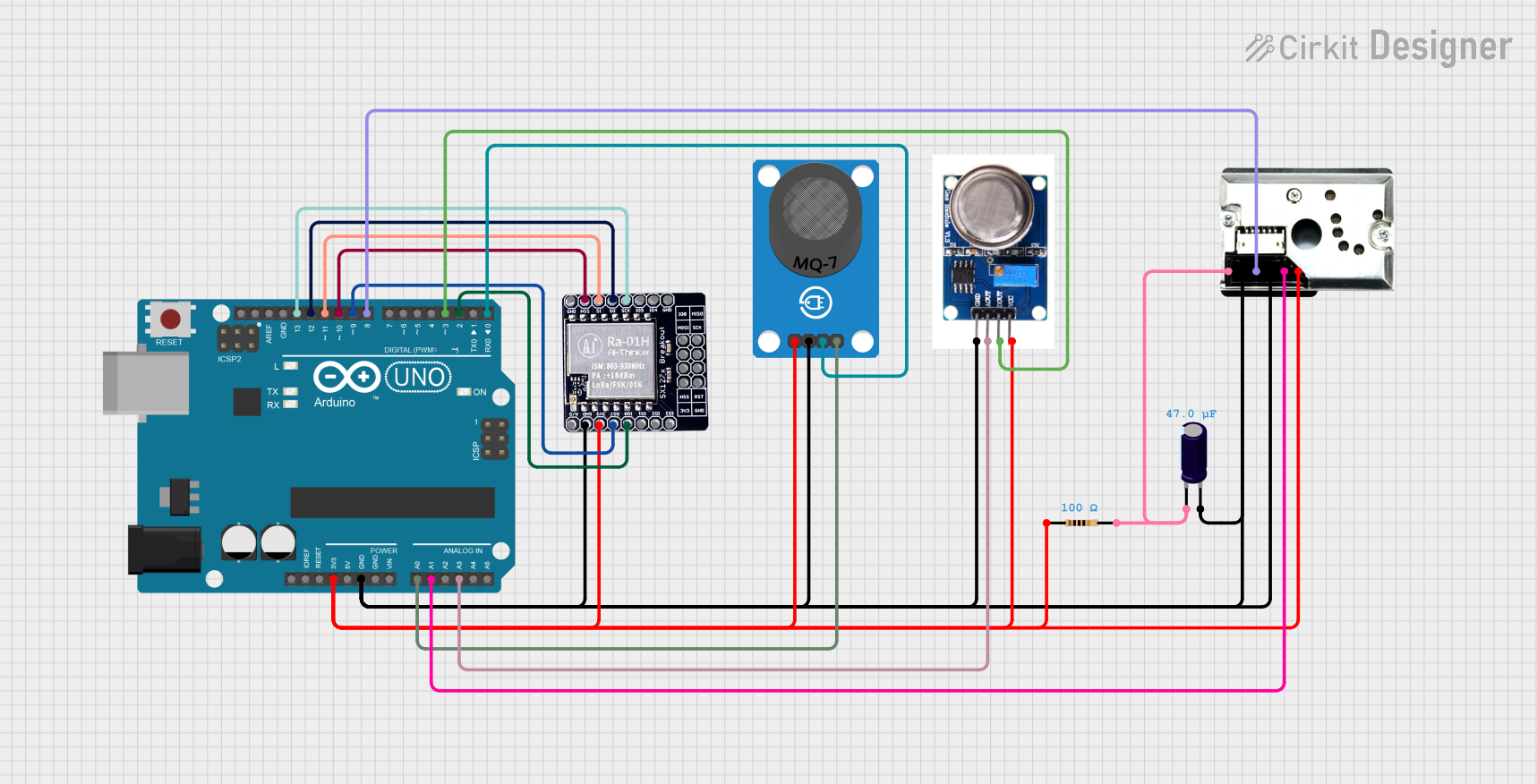
 Open Project in Cirkit Designer
Open Project in Cirkit DesignerExplore Projects Built with MQ-131 SENSOR OZONE GAS V2

 Open Project in Cirkit Designer
Open Project in Cirkit Designer
 Open Project in Cirkit Designer
Open Project in Cirkit Designer
 Open Project in Cirkit Designer
Open Project in Cirkit Designer
 Open Project in Cirkit Designer
Open Project in Cirkit DesignerCommon Applications and Use Cases
- Air quality monitoring
- Industrial ozone concentration detection
- Environmental safety systems
- Ozone generators control
- Portable gas detectors
Technical Specifications
Key Technical Details
- Sensor Type: Electrochemical gas sensor
- Detection Gas: Ozone (O3)
- Concentration Range: 10 ppb to 2 ppm (parts per million)
- Supply Voltage (Vcc): 5V ± 0.1V DC
- Preheat Time: ≥ 48 hours
- Response Time: ≤ 90 seconds
- Output Signal: Analog voltage
- Operating Temperature: -10°C to 40°C
- Relative Humidity: 15% to 90% RH (non-condensing)
Pin Configuration and Descriptions
| Pin Number | Pin Name | Description |
|---|---|---|
| 1 | VCC | Power supply (5V DC) |
| 2 | GND | Ground connection |
| 3 | DOUT | Digital output (TTL logic level) |
| 4 | AOUT | Analog output (variable voltage) |
Usage Instructions
How to Use the Component in a Circuit
- Power Supply: Connect the VCC pin to a 5V power supply and the GND pin to the ground.
- Analog Output: Connect the AOUT pin to an analog input on your microcontroller to read the analog voltage corresponding to the ozone concentration.
- Digital Output: (Optional) Connect the DOUT pin to a digital input on your microcontroller if you wish to use the digital output feature.
Important Considerations and Best Practices
- Calibration: The sensor requires calibration to ensure accurate readings. Follow the manufacturer's calibration procedure before use.
- Preheating: Allow the sensor to preheat for at least 48 hours before taking measurements for the first time.
- Temperature and Humidity: Ensure that the sensor operates within the specified temperature and humidity range.
- Avoid Contaminants: Keep the sensor away from organic solvents, silicon compounds, and high-concentration gases to prevent poisoning and damage.
Troubleshooting and FAQs
Common Issues
- Inaccurate Readings: If the sensor provides inconsistent or inaccurate readings, recalibrate the sensor and ensure that it is operating within the specified environmental conditions.
- No Output: Verify that the power supply is connected correctly and that the sensor is properly preheated.
Solutions and Tips for Troubleshooting
- Preheat the Sensor: Ensure that the sensor has been preheated for the recommended time.
- Check Connections: Inspect all connections to the sensor for any loose wires or poor contacts.
- Environmental Factors: Consider any environmental factors that may affect the sensor's performance, such as sudden changes in temperature or humidity.
FAQs
Q: How often should the sensor be calibrated? A: The sensor should be calibrated periodically, depending on the usage and the manufacturer's recommendations.
Q: Can the sensor detect other gases? A: The MQ-131 is designed specifically for ozone detection and may not be accurate for other gases.
Q: Is the sensor waterproof? A: No, the sensor is not waterproof and should be protected from water and condensation.
Example Arduino Code
// MQ-131 Ozone Gas Sensor Example Code
const int analogPin = A0; // Analog input pin connected to AOUT on the sensor
void setup() {
Serial.begin(9600); // Initialize serial communication at 9600 baud rate
}
void loop() {
int sensorValue = analogRead(analogPin); // Read the analog value from sensor
float ozoneConcentration = sensorValue * (10.0 / 1023.0); // Convert to ozone concentration
// Note: The conversion factor will vary based on calibration and environmental factors
Serial.print("Ozone Concentration: ");
Serial.print(ozoneConcentration);
Serial.println(" ppb");
delay(1000); // Wait for 1 second before the next read
}
Note: The code provided is a basic example to read the analog output from the MQ-131 sensor. The conversion from the analog value to the actual ozone concentration in ppb or ppm requires calibration with a known ozone source and may involve additional factors based on the specific application and environmental conditions.